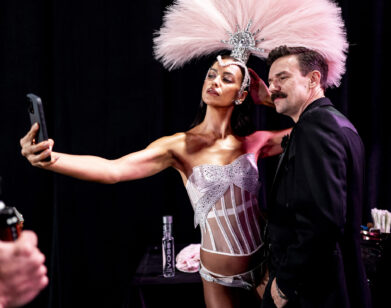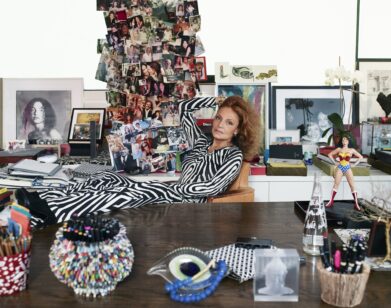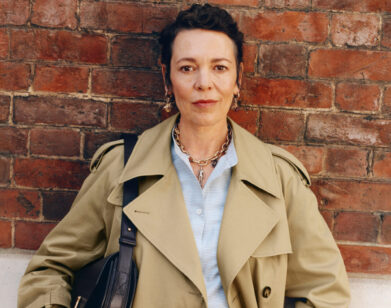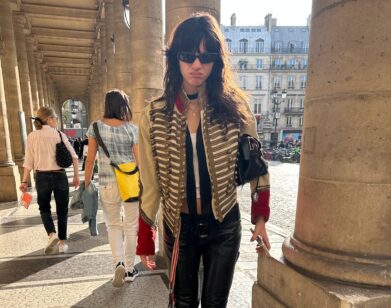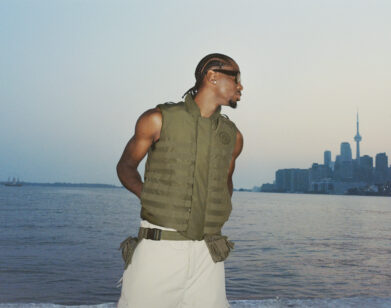Gildo Zegna

One hundred years ago, Ermenegildo Zegna founded a wool mill in the small Alpine town of Trivero, Italy. This patriarch of style could not have predicted the heights his namesake company would reach in the next century. Today, Zegna is a menswear colossus, having swept through the Western and Southern hemispheres with its suiting and couture tailoring, and for the last two decades—when most brands were still proudly polishing their flagship signage in the Western capitals—creating a men’s luxury market in the great expansive market of China. Ermenegildo died in 1966, passing control of the business to his two sons, Angelo and Aldo, and now his grandson, the dashing Ermenegildo “Gildo” Zegna, holds the reins as chief executive officer. This summer, Gildo will see another leap forward with five new Peter Marino–designed stores opening in China—including one in Shanghai, which will be the largest Zegna store in China. Marino first started working with Gildo in 2006, when he was commissioned to design flagship stores in Milan and New York. He recently caught up with Gildo to discuss Zegna’s 100th birthday celebration.
PETER MARINO: One of the things I’ve always wanted to ask you was how Zegna made such an early move into China. Today people always say, “Gildo Zegna was one of the first ones there.”
GILDO ZEGNA: When I went to China for the first time, I was still very young. I’m talking 20 years ago. I must give credit to my father. He truly was the one who thought China would be a major force.
MARINO: But you were the one to put it into action.
ZEGNA: We did it in 1991. We collaborated with a small historic department store hotel in Beijing. Those were the days when there were a lot of stores inside hotels. We made sure to have strong organization, which is key to a good market. We built it up when no one else—aside from Louis Vuitton, who came a year after us—had any idea that the Chinese market would boom like it has. Today, in mainland China, we have 57 Zegna stores and, in greater China, more than 70. We are growing at a rate of 30 percent a year. And as you know very well, we are going to open five more stores in mainland China this year. We will have more than 1,000 employees there. That’s even bigger than what we have in the United States. It’s an incredible thing, and let’s hope it continues. And there is no reason it shouldn’t. There are 50 major cities, and in each one, there is a Zegna man ready to buy good-quality Italian products.
MARINO: I was thrilled with the Zegna store we did in Hong Kong because of its impact on the skyline.
ZEGNA: Yes, it’s unbelievable. Hong Kong is really global. When most people leave mainland China, the first thing they see is this amazing city with the great façade of Zegna. And now the Shanghai store is opening for our 100-year anniversary—first Shanghai and then Hong Kong, Chengdu, Shenzhen, Hangzhou.
MARINO: I remember when I first joined your team, I was so impressed that your made-to-measure department made most of the tuxedos for the world’s leading orchestra conductors—like [Valery] Gergiev. But I soon learned that the brand is involved with a lot of philanthropy as well.
ZEGNA: For the philanthropy, I must give credit to my grandfather Ermenegildo Zegna, who was really the brain of the company. Ermenegildo was a man who wanted to give back to the community. In the 1930s, there was not much care given to the factory workers. The conditions were very poor. It was his idea to create a Zegna village, where those working and contributing would always have the benefits of a community. This village has a hospital, restaurants, a swimming pool, shops, and an incredible road—we call it our “13-mile drive”—which goes up to the mountains and has a ski resort. And they planted half a million trees. This continued with my father, and today it’s kind of a national park in the Biella region of Italy. We continue to maintain and improve the territory. Anna [Zegna, Gildo’s sister and image director for the Ermenegildo Zegna Group] is the head of the foundation [Fondazione Zegna], which doesn’t just include that land but also charitable projects in Africa, the United States, India. . . . We want to find a way to contribute. And, of course, I always think we have to be responsible to the business itself. I have to make sure that the business stays profitable in order to make all of these fantastic clothes. [laughs] But it makes a lot of sense to remember what’s been done, as this is our centennial year.
MARINO: I find the social responsibility of planting all those trees really remarkable. Nobody was green in the 1930s. In the first meeting I had with Anna, she said, “Whatever you do, Peter, those stores better be green! I’m going to be checking your electric bills.”
ZEGNA: [laughs] I think the color green itself is important. And the combination of natural materials you used—the wood and the stone—makes us remember the mountains and flowers.
MARINO: Another thing I want to discuss is your incredible innovation in textiles. You might say Ermenegildo’s origins are in saddles, but your work is so much about the manufacturing and design of highly technical fabrics. Plus, you make fabrics for other brands. I believe you’re manufacturing the fabrics for Tom Ford’s line now.
ZEGNA: Correct. I’m very proud of the innovation in fabrics. Whether it’s the yarn of a sweater or the wool of a suit, I think it gives us incredible exclusivity and performance. I don’t think innovation is just about how a product looks but, really, how it performs. It comes down to wearability and comfort. Today we want to run around and travel light. That’s why we created our Traveller collection, which has to be lightweight and comfortable.
MARINO: But the fabrics actually have special effects. Can you give an example?
ZEGNA: Cool Effect is a high-performance fabric in which the fibers are highly twisted, so it’s resilient to sunlight and able to reduce body temperature by 8 to 10 degrees. That is for the summer. Another example is Elements, which is for winter outerwear and actually has cells in the fabric that open and close so the fabric breathes. We also make one fabric in our mills, called Micronsphere, that is spotless. It’s a natural fabric that is impossible to stain.
MARINO: I read once that Anna got an idea for a waterproof fabric by looking at a lotus leaf and how it repelled water. And the new Golden Fleece fabric has an interesting history as well, right?
ZEGNA: That’s something that goes back to my grandfather’s days, when he sent my father to Australia. The wool growers there were still in a very early, poor stage of development, and we had to invent ways to collaborate with them. In order to promote fine wool, we awarded Zegna Trophies to wool growers who had the best crops of the year. My father awarded that first trophy in 1963. From then on, it’s become part of our DNA. In fact, we created the Cashmere Trophy and Mohair Trophy. A lot of people have copied us, but we were the first, and we really believed in that. Out of these crops, we developed a limited edition Vellus Aureum, which is really the finest fabric in the world. We are talking about 12 or 13 microns, which is even finer than cashmere. And the length of the wool is what gives it its performance. And this year, for the centennial, we have created a special Centennial Vellus Aureum that will only be available in 20 cut lengths. The first cut length of 20 will be on auction in April at Christie’s.
MARINO: What else are you doing to celebrate the anniversary?
ZEGNA: Since my great-grandfather Angelo Zegna was a watchmaker, I was also inspired to design a centennial watch. I shopped around and finally found a partner with Gino Macaluso, the owner of Girard-Perregaux. It’s one of the most extraordinary watch companies in Switzerland and more than 200 years old. We made this beautiful centennial Zegna watch in a limited edition of 100 pieces.
MARINO: One final question. Whenever I’m asked about working with you, I always get this question: “How do two men who dress so differently come together and work so successfully?” I’m a great admirer of the way you dress, but I’m sort of a motorcycle flog.
ZEGNA: [laughs] How did these two crazy guys get together? I think it’s passion for what we do and the respect for each other’s work. Because, I must say, sometimes I think I’m the one who really believed in you and brought your project aboard. I have been so proud to be associated with you because you bring a different point of view to the market. It’s the passion and the ambition. However we dress, it’s essential that we are representing our own personalities.
Photos: Peter Marino is a New York City–based architect and designer. Gildo Zegna at his Milan headquarters, February 2010. All clothing: Centennial Fabric Number 1 by Ermenegildo Zegna, a re-creation of the original woven fabric produced at the Lanificio Zegna Mill.

